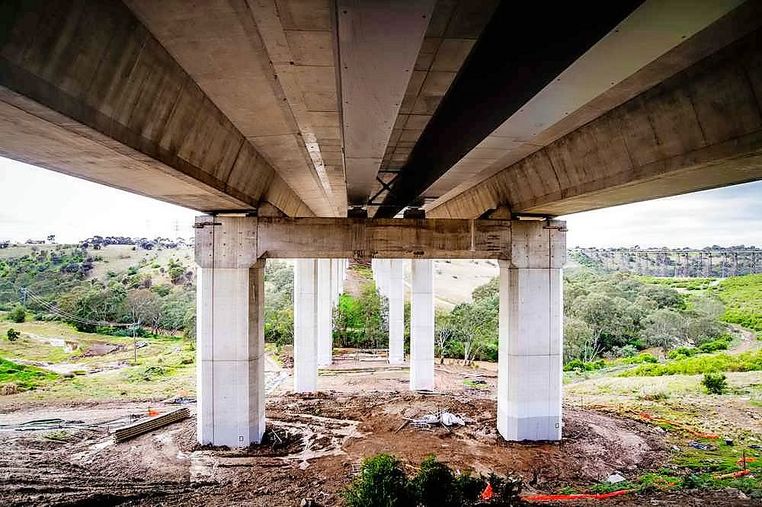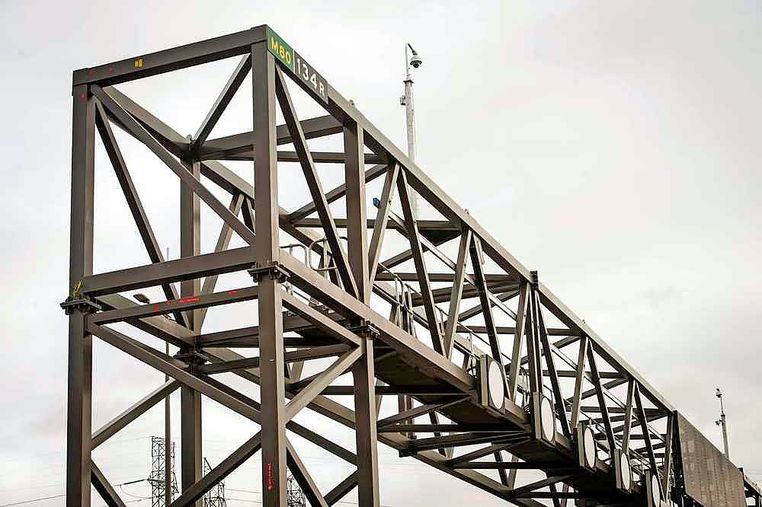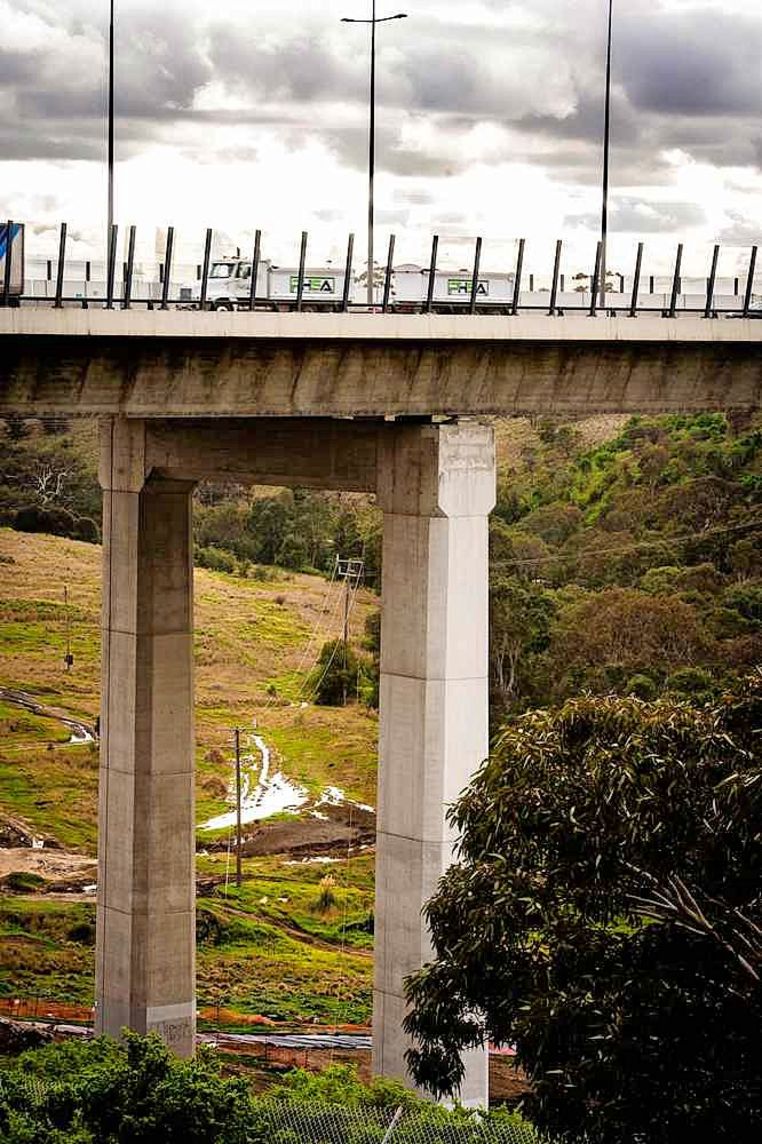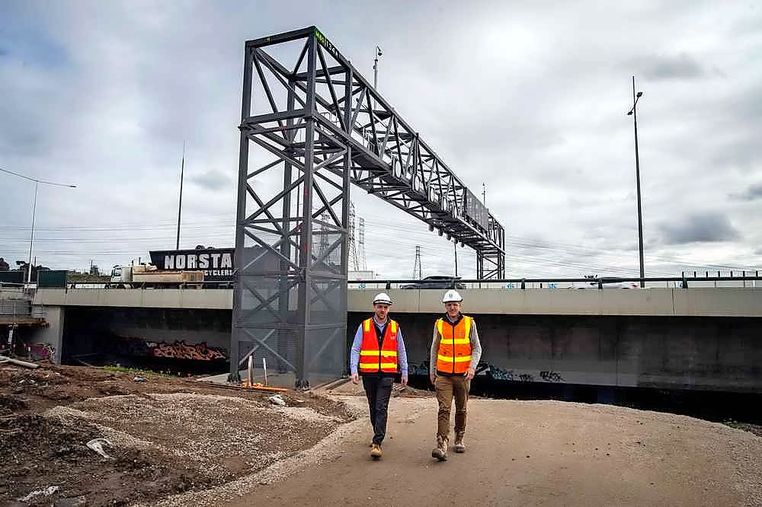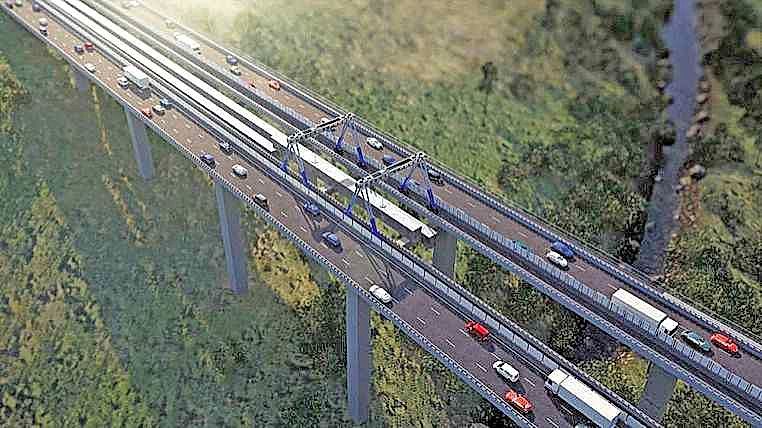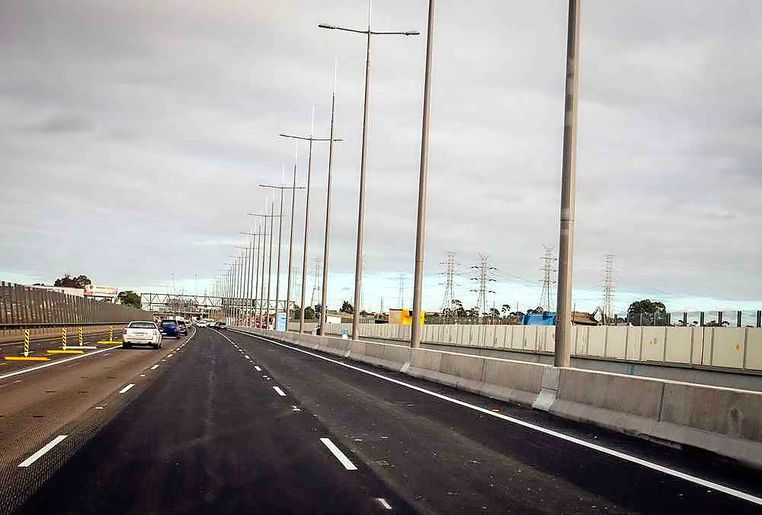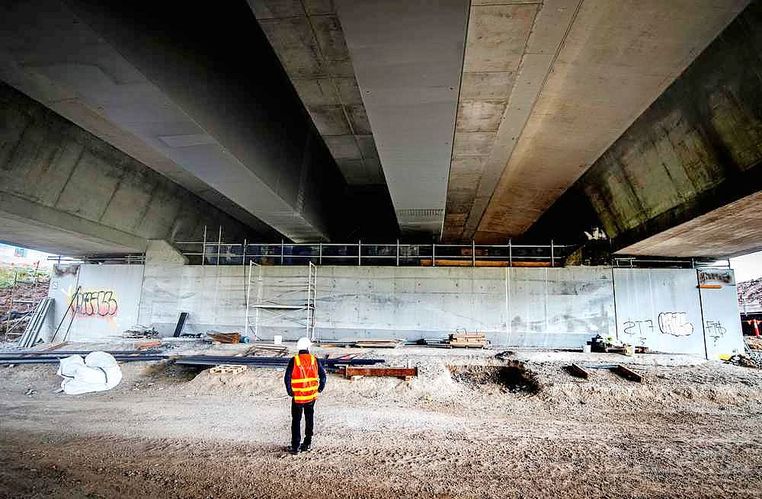Significant upgrades to a western suburbs icon are almost complete.
Construction to widen the Ring Road’s EJ Whitten Bridge hit a major milestone last week, with traffic switched into the inside lanes so final works to safety barriers can be completed.
Works on the bridge were slated to be completed by January, 2019, but M80 project delivery manager Andrew Robilliard said the project was running ahead of schedule.
“We’ve switched traffic to the inside lanes now, which will allow us to install public safety barriers to the outside of the bridge,” Mr Robilliard said.
“We’ve then got to asphalt the road, but we’re beholden to the weather for that because we need the temperature to be at least 15 degrees to do it properly.”
Prior to the works, the bridge, which was built in the 1990s, was made up of two separate carriageways with three lanes in each direction.
The carriageways have been joined to create a single bridge with five lanes in each direction.

Project manager Sam Thornton said while everything had gone according to plan, the job was a significant undertaking.
“We used gantry cranes to build new bridge sections,” Mr Thornton said.
“We used the cranes to connect the bridge supports, then laid 20 beams along the length of the bridge.
“Once the beams were secured, we were able to put the pieces of the bridge deck in place, creating the single bridge.
“In total, there were 20 bridge beams, which were up to 54 metres long and weighed up to 85 tonnes.”
The gantry cranes were a vital component to the success of the project. While not typically used in bridge construction, the cranes were ideal because their strength, shape and size allowed traffic to continue to flow while the bride was widened.
The EJ Whitten Bridge is 520 metres long, making it the second longest bridge in Victoria.
It stands 50 metres high, which Mr Thornton said posed some challenges.
“Given the height of the bridge and the manner in which we were widening it, we couldn’t actually work from underneath, which is why we lowered pieces in from above,” he said.
“We had our guys working in cages, looking down, which made for some pretty interesting times.
“Space was also a bit of an issue because we were working behind barriers, sometimes only three metres wide.”

In addition to the extra lanes, the upgraded bridge will also include electronic overhead gantries, which display variable speed limits and travel times and can manage lane closures in the case of road incidents.
Intelligent transport systems will monitor and manage incidents on the freeway, with wireless vehicle detectors to count and monitor traffic volumes.
The bridge will also be better illuminated with new LED lights installed.
The bridge works are part of a wider project to upgrade the 3.2-kilometre section of the M80 Ring Road from Sunshine Avenue to the Calder Freeway.
Mr Robilliard said the upgrades would improve safety and traffic flow.
“The bridge is obviously a major part of the project, but there’s also significant works being done to other parts of the road which is sometimes a little lost,” Mr Robilliard said.
“The section of the M80 at Sunshine Avenue will be increased from two lanes to four, which extends to five lanes over the bridge, through to the Calder.”
Mr Robilliard said the extra lanes will improve traffic flow and safety.
“These upgrades will get rid of the bottlenecks at Sunshine Avenue, Keilor Park Drive and the Calder Freeway,” he said.
“With the extra lanes, the need for drivers to merge and weave is reduced, which improves flow and safety.
“These improvements should cut travel times by up to 15 minutes in peak periods.”
The project, which is a joint initiative of the Australian and Victorian governments will cost a total of $300 million.
For more information on the project visit: www.vicroads.vic.gov.au/planning-and-projects/melbourne-road-projects/m80-ring-road-upgrade


